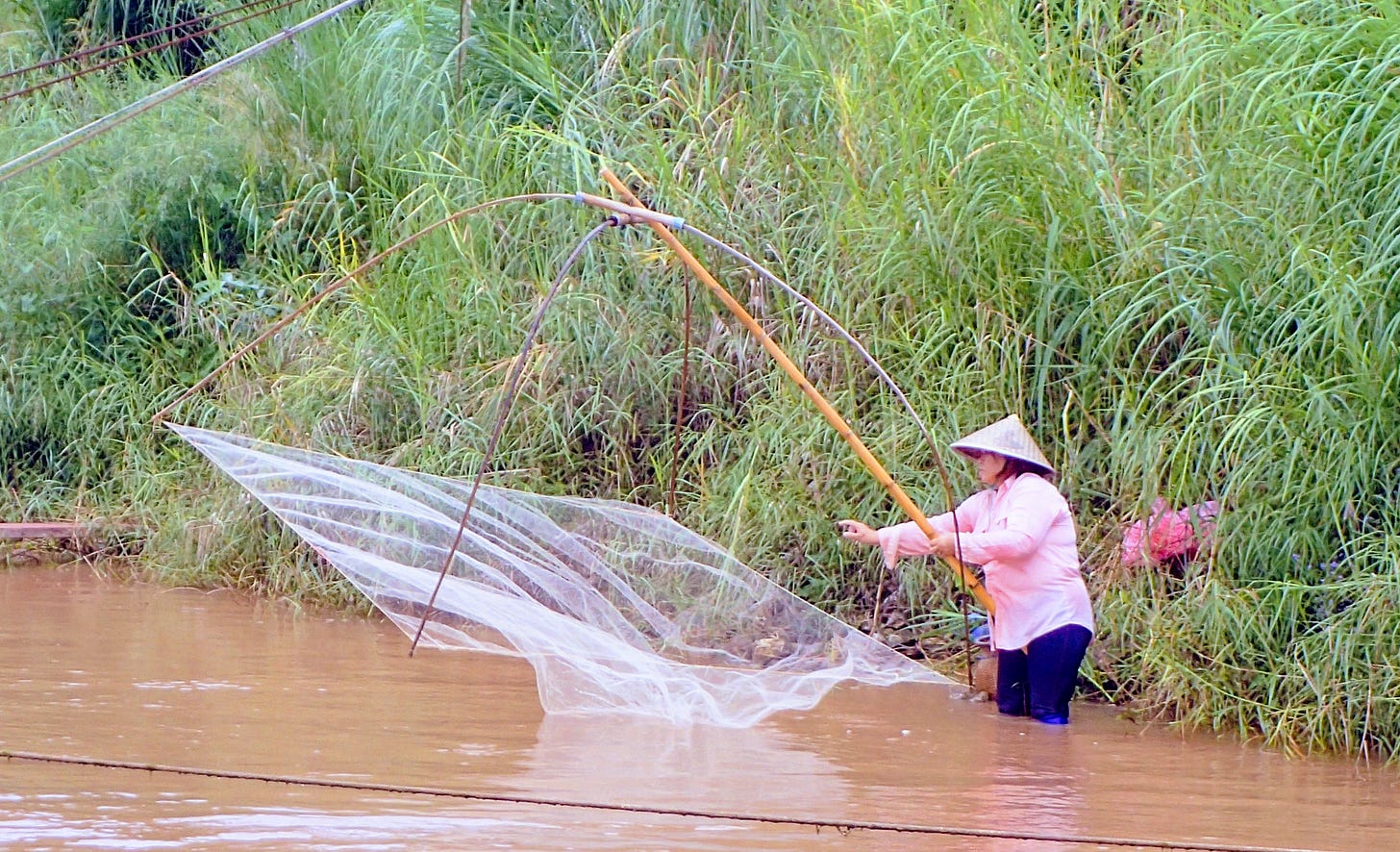Across Southeast Asia, leaders are grappling with the immense and overlapping challenges of climate change, biodiversity loss, and sustainable development. Commitments under the Paris Climate Agreement and the Kunming-Montreal Global Biodiversity Framework have brought unprecedented attention to the climate-nature nexus. Yet even as environmental consciousness grows and governments pledge to protect our planet’s ecosystems, a critical component of regional sustainability is being dangerously overlooked: the fish of the Mekong River.
Since the release of WWF Asia’s 2024 report, “The Mekong’s Forgotten Fishes,” which exposed the dramatic decline in fish populations across one of the planet’s most biodiverse and productive river systems, there has been little to no sign of recovery. Despite the Mekong River Basin contributing around 15 percent of the world’s inland fish catch—more than 2.3 million tons each year—this vital resource remains chronically undervalued in both policy and investment. With an estimated annual worth of over US$11 billion as of 2015, the fishery now stands at a dangerous crossroads, teetering on the edge of irreversible collapse.
The Mekong’s fishes are not just a biological asset; they are the lifeblood of a region. Tens of millions of people across Cambodia, Laos, Thailand, Vietnam, Myanmar, and China depend on the river’s bounty for food, income, and cultural identity. Yet these fish—over 1,100 species strong, many of which are endemic—face an onslaught of escalating threats. Hydropower dams, sand mining, overfishing, pollution, habitat fragmentation, and the impacts of climate change are combining in a perfect storm of ecological disruption.
A River Under Siege
The WWF’s report is unequivocal in its diagnosis: the Mekong’s fisheries are in crisis. And this is not a distant threat—it is already unfolding. Fish catches are declining across major parts of the basin. Once-abundant species like the Mekong giant catfish—a cultural and ecological icon—are now critically endangered. Entire aquatic food webs are being destabilized, with cascading impacts on local economies and nutrition.
The construction of dams, particularly in the upper Mekong (known as the Lancang in China), has altered natural flow regimes, blocked migratory routes, and degraded spawning grounds. The Tonle Sap Lake, often referred to as the “beating heart of the Mekong,” has seen significant changes in seasonal flood patterns due to upstream hydrological alterations. These shifts are devastating to species that rely on the lake’s floodplains for breeding and feeding.
Meanwhile, the political response to the Mekong’s fisheries crisis remains fragmented and sluggish. At the center of the region’s transboundary water governance sits the Mekong River Commission (MRC), a body tasked with fostering cooperation between the lower basin countries—Cambodia, Laos, Thailand, and Vietnam. But despite its mandate, the MRC has repeatedly struggled to enforce ecological safeguards, particularly when it comes to protecting fish populations.
A major part of the challenge lies in the MRC’s limited authority. As a consensus-based organization, it lacks binding enforcement power, meaning that member states are under no legal obligation to comply with its recommendations. This has left the commission in a largely advisory role, issuing impact assessments and convening consultations — many of which are ignored or overridden when national interests dictate otherwise.
For countries like Laos and Cambodia, hydropower development is seen as a cornerstone of economic growth. The proliferation of dams, particularly on the mainstream Mekong and its tributaries, has been driven by the promise of energy exports and foreign investment, often from neighboring countries or China. These projects, however, come with steep ecological costs—blocking critical fish migration routes, altering sediment flow, and reducing water quality—yet they frequently move forward despite warnings from environmental experts and civil society.
Why Fish Matter—Now More Than Ever
The significance of the Mekong’s fish goes far beyond numbers and dollars. In Cambodia, for instance, fish provide over 60% of animal protein intake—a vital pillar of food security. In Laos and parts of Vietnam, small-scale fisheries are a primary livelihood source, especially for women and marginalized communities. These fisheries also act as a social safety net, particularly in times of economic hardship or climate-induced agricultural failures.
What is at stake is not only ecological collapse but also a potential humanitarian crisis. If the decline continues unchecked, we will witness an increase in poverty, malnutrition, and displacement across the basin. And while alternative protein sources may exist in theory, they are not readily accessible or affordable for millions who depend on wild-caught fish.
A Call for Regional and Global Action
The WWF report makes a compelling case for change, urging governments, donors, and development banks to recognize inland fisheries as essential infrastructure—every bit as critical as roads, power plants, or irrigation systems. Recommendations include:
Moratoriums on new dams in ecologically critical zones
Stronger regional cooperation on fisheries management
Investment in habitat restoration and fish passage technologies
Robust monitoring and data collection to inform adaptive strategies
Recognition of local and Indigenous fishing rights and knowledge systems
In short, saving the Mekong’s fishes is not a side issue—it is central to sustainable development, regional stability, and climate resilience.
The Future of the Mekong is Still Unwritten
We are at a crossroads. The fate of the Mekong’s fishery—and the millions who depend on it—hangs in the balance. The question is whether decision-makers will continue to turn a blind eye to this unfolding tragedy or finally act with the urgency the situation demands.
The opportunity to reverse course is still within reach. But time is not on our side. The Mekong River has nourished civilizations for millennia; we owe it—and its forgotten fishes—a future.






